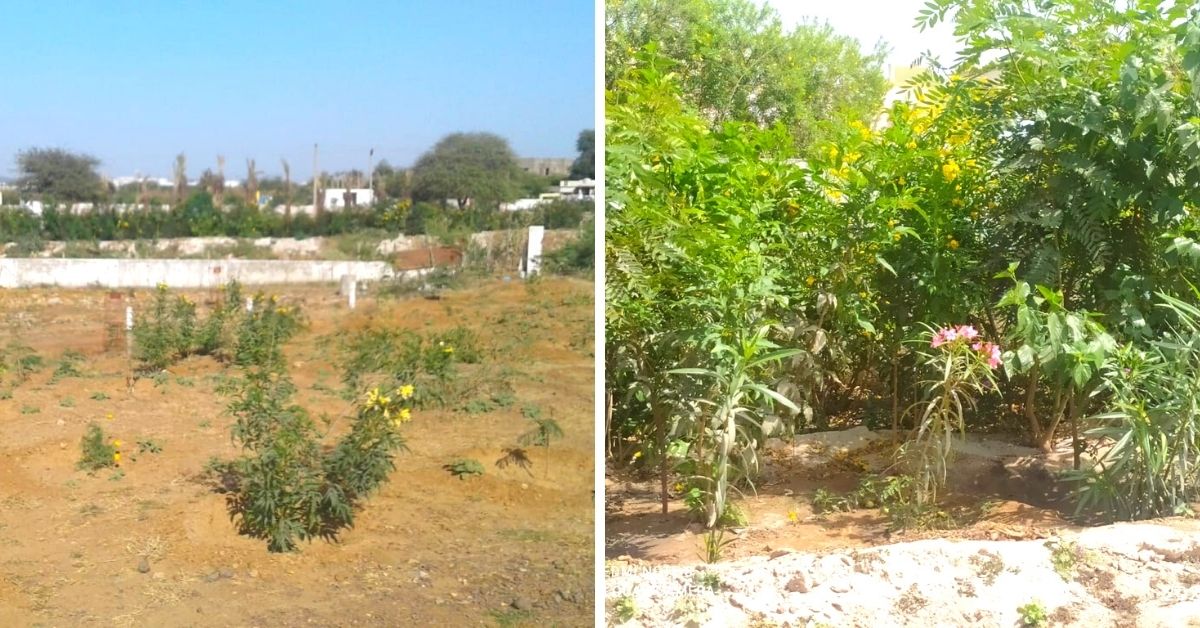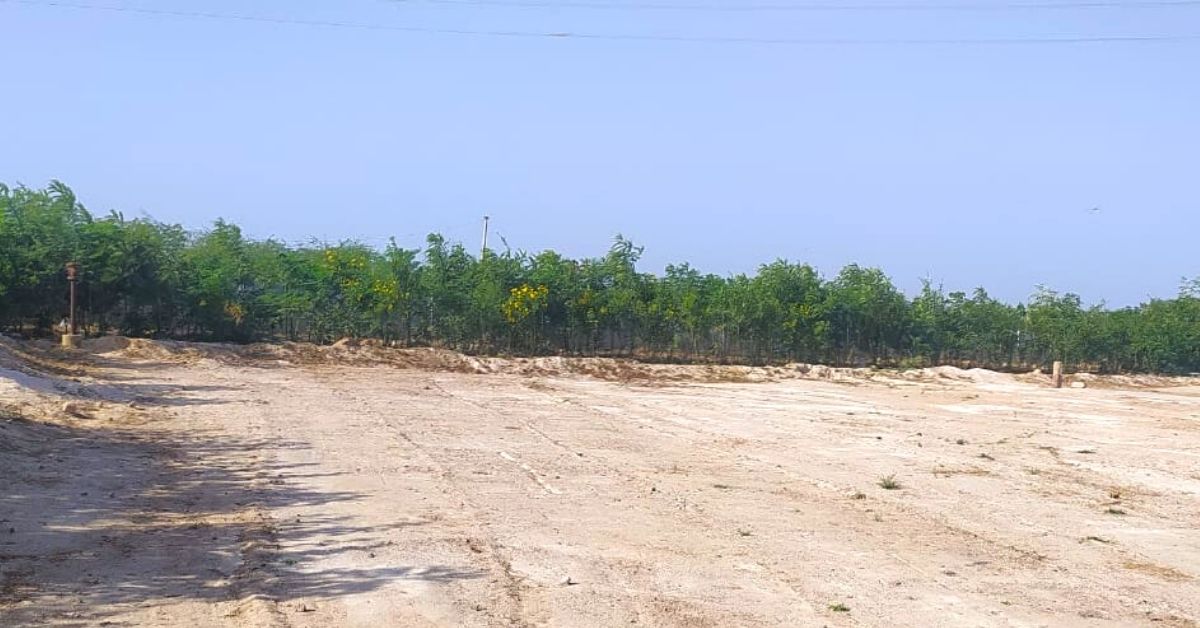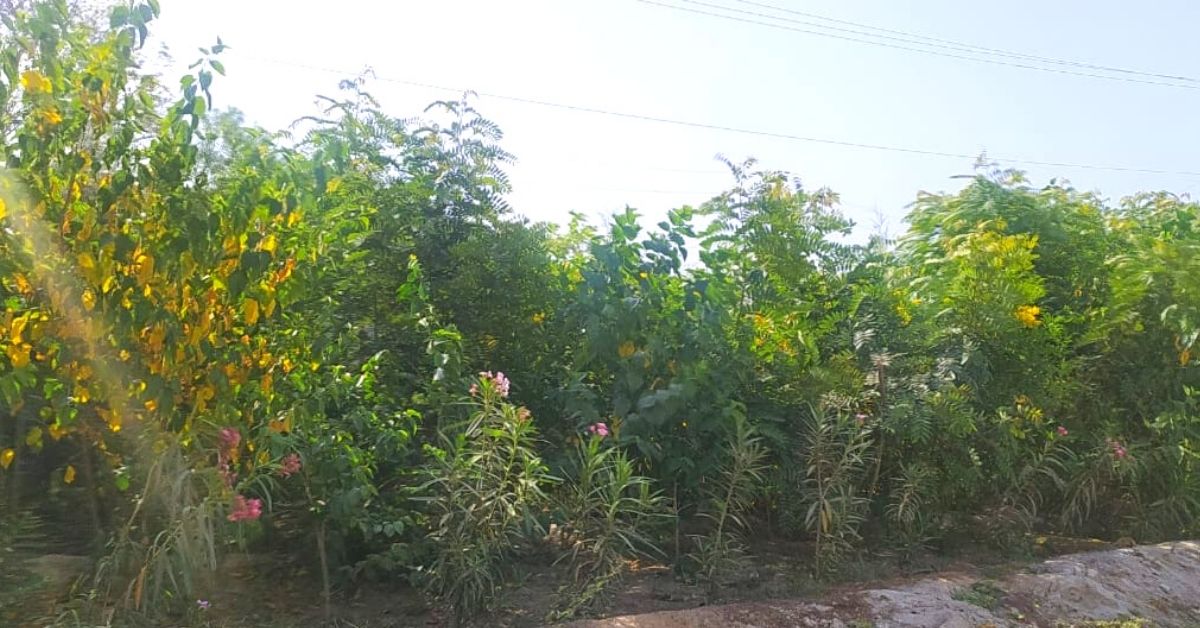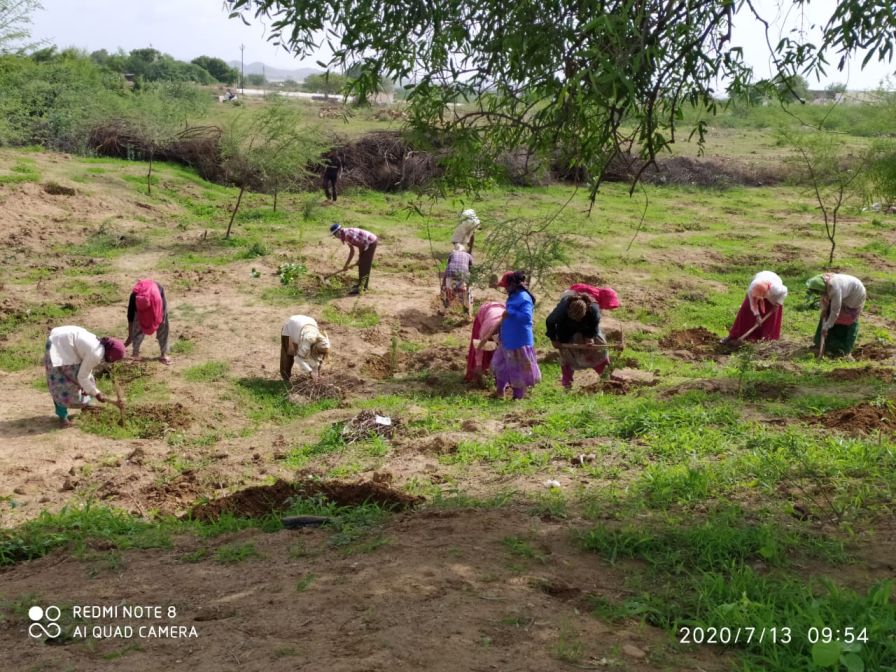When Kankuben became the Sarpanch of Kutch’s Kukma village, she had two pressing problems to solve — lack of green cover and water pollution from factories. She was unable to comprehend why a small village with a population of 8,200 was moving towards a larger environmental crisis, given that it was already gripped by the district’s water problem.
Compared to other parts of Kutch, Kukma village had groundwater tables at an acceptable depth, around 200 feet, a few years ago. As the neighbouring villagers indulged in rampant groundwater extraction, Kukma’s depth went at 600 feet. Thus, using groundwater for plants was a strict no.
After innumerable panchayat discussions and a lot of research, Kankuben arrived at a solution that would mitigate the twin problems. She launched a massive wastewater recycling project that would help establish a green oasis. The idea was to create a Miyawaki forest and use recycled wastewater for its growth.
Did it work?
Yes, the village today has a flourishing forest comprising 7,500 trees. Every day, 10,000 litres of wastewater is purified in their RO plant to water thousands of plants.

“It was a collective effort taken by villagers, the panchayat committee, and our sponsors, which helped us achieve this feat,” says Kankuben, “Seeing the 85% survival rate of plants and the fruitful results, several village heads and experts have visited our village to study the model.”
Here’s how the villagers did it

As anticipated, villagers were hesitant to support the sustainable project initially, primarily citing that they wouldn’t benefit directly. So, Kankuben guaranteed employment to ten women through the MNREGA scheme. Meanwhile, the farmers were educated about how their fields were at a risk of damage from all the chemicals and pollutants released from factories directly into the streams. Close to 40 youth enrolled themselves for shramdaan (volunteering) to plant the saplings for the Miyawaki forest.
Once the villagers were convinced, Kankuben and her team started arranging for funds. Mandvi-based Vivekanand Research and Training Institute agreed to finance the RO plant, which was purchased and installed at Rs 7,50,000 in 2017. The RO plant, which has the daily capacity to convert 10,000 litres, removes impurities and transports the recycled water to a water tank and, from there, water is irrigated in the forest. Panchayat-dedicated funds for the water pipeline and corporate companies sponsored the seedlings.
Explaining the science behind the Miyawaki forest, Kankuben says, “The method was invented by and named after Japanese botanist Akira Miyawaki. Under this approach, dozens of native species are planted in the same area, close to each other, which ensures that the plants receive sunlight only from the top, and grow upwards rather than sideways. It is a multi-layered process, wherein different species of shrub layer (6 feet), sub-tree layer (6-12 feet), tree layer (20-40 feet) and canopy layer (above 40 feet) are planted next to each other. Plants grow ten times faster.”
The villagers and MNREGA workers dug a one-metre-deep pit and planted 3-5 native saplings per square metre maintaining a distance of 40-60 centimetres between the saplings. The entire activity took around 15 days.

The sarpanch ensured that different types of trees including fruit-bearing, root to flower-giving were planted. The forest has neem, karanj (Millettia pinnata), almond, gulmohar, pomegranate, custard apple, and jamfal (guava), among many others.
The work of the panchayat didn’t just stop at the plantation. In the first year, they faced certain problems like animals entering the forest and destroying the plants. On some occasions, even villagers damaged them. To tackle this, the team built fences.

Kankuben soon realised the care and maintenance of the forest had to be community-owned for the model to sustain. So, she made committees comprising local villagers to look after the growth of the forest. This way, even after she retires, the forest will be taken care of.
Besides the Miyawaki forest, the panchayat has additionally planted more than 50,000 trees in a conventional way, and aim to achieve a target of one lakh in the coming months. If the target is met, their next project will be to establish a collective organic garden for and by the people, says Kankuben.
In a district that is already distressed by frequent droughts, Kankuben’s innovative idea, which ensures green cover without putting any burden on existing water channels, has proved to be an adaptable solution.
Edited by Divya Sethu
No comments:
Post a Comment